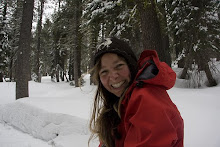The green color in this image of South America shows vegetation that is growing during during the dry season. Reddish areas "brown down" in the dry season. The black line marks the boundary of the Amazon rainforest -- red areas within the boundary indicate areas where the primary forest has been disturbed. Image courtesy of the Terrestrial Biophysics and Remote Sensing Lab, The University of Arizona.
The Amazon rainforest has been photographed from satellites, the 'greenness' been made into an algorithm, and they've found that old-growth rainforests grow more during the dry season than the wet. It is surmised that older trees have deep roots that can still reach water even during dry seasons when the sky is clear more often and thus more photosynthesis can take place.
This information is a clue in the puzzle about the global cycle of carbon, and has implications for fire regimes in the Amazon, where during El Niño years even tropical forests succumb to fire. This also provides valuable perspective on the ecological cycle of the forests and why old-growth forests are more for sustainable and promote biodiversity.
More at: Monga Bay

No comments:
Post a Comment